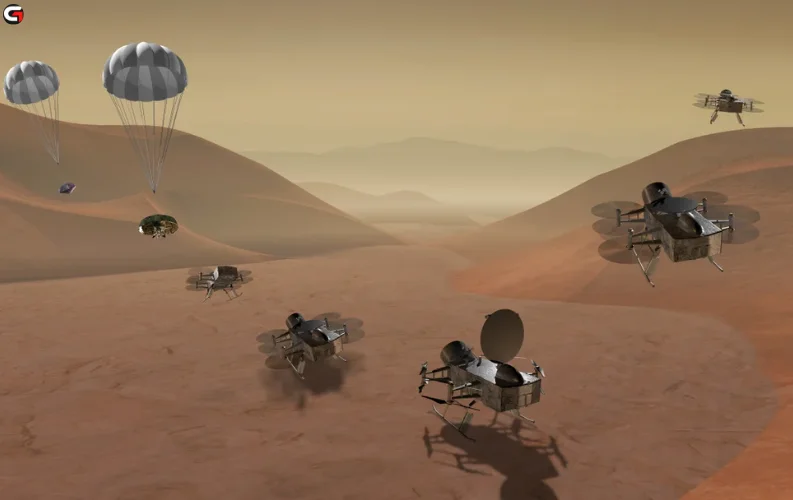A captivating new image taken by NASA’s Mars Reconnaissance Orbiter (MRO) reveals a series of sand dunes on Mars that resemble kidney beans in shape. Captured by the High-Resolution Imaging Science Experiment (HiRISE) camera in September 2022, this photo, released recently, may provide essential clues about the planet’s past and whether it could have supported life long ago.
What makes these Martian dunes so intriguing is that they are remarkably still, unlike Earth’s dunes, which are constantly moved by the wind. NASA explains that these dunes are coated with a layer of carbon dioxide frost during the colder months of Mars’ year. The temperatures at Mars' poles can dip as low as -123°C at night, creating an environment where both carbon dioxide and water ice can form. This frost layer prevents the movement of the sand and preserves the dunes in place until the weather warms up.
By studying the changes in this frost layer, scientists hope to gain valuable insights into Mars' past climate. Understanding how the planet’s environment evolved could help answer one of the most significant questions in space exploration: Could Mars have supported life in its distant past?
The Search for Life on Mars
NASA’s research into the possibility of life on Mars has been growing steadily. In October 2024, a study suggested that beneath the frozen ice on Mars’ surface, microbes could potentially thrive in the shallow pools of meltwater. This finding is particularly significant, as it suggests that even in the harsh conditions of Mars, some form of life could have existed or may still exist beneath the surface.
Additionally, a study by Harvard's Paleomagnetics Lab has uncovered new information about Mars' ancient magnetic field. The research suggests that this magnetic field might have lasted until 3.9 billion years ago, far longer than earlier estimates of 4.1 billion years. This discovery provides further support for the idea that Mars may have once had a more Earth-like environment, one that could have supported life.
Even though Mars today is a cold and barren world, these new findings continue to fuel speculation that it may have once harbored life. With the discovery of frozen dunes, ancient water, and new climate data, scientists are piecing together the possibility that Mars could have been a cradle for life billions of years ago.






















